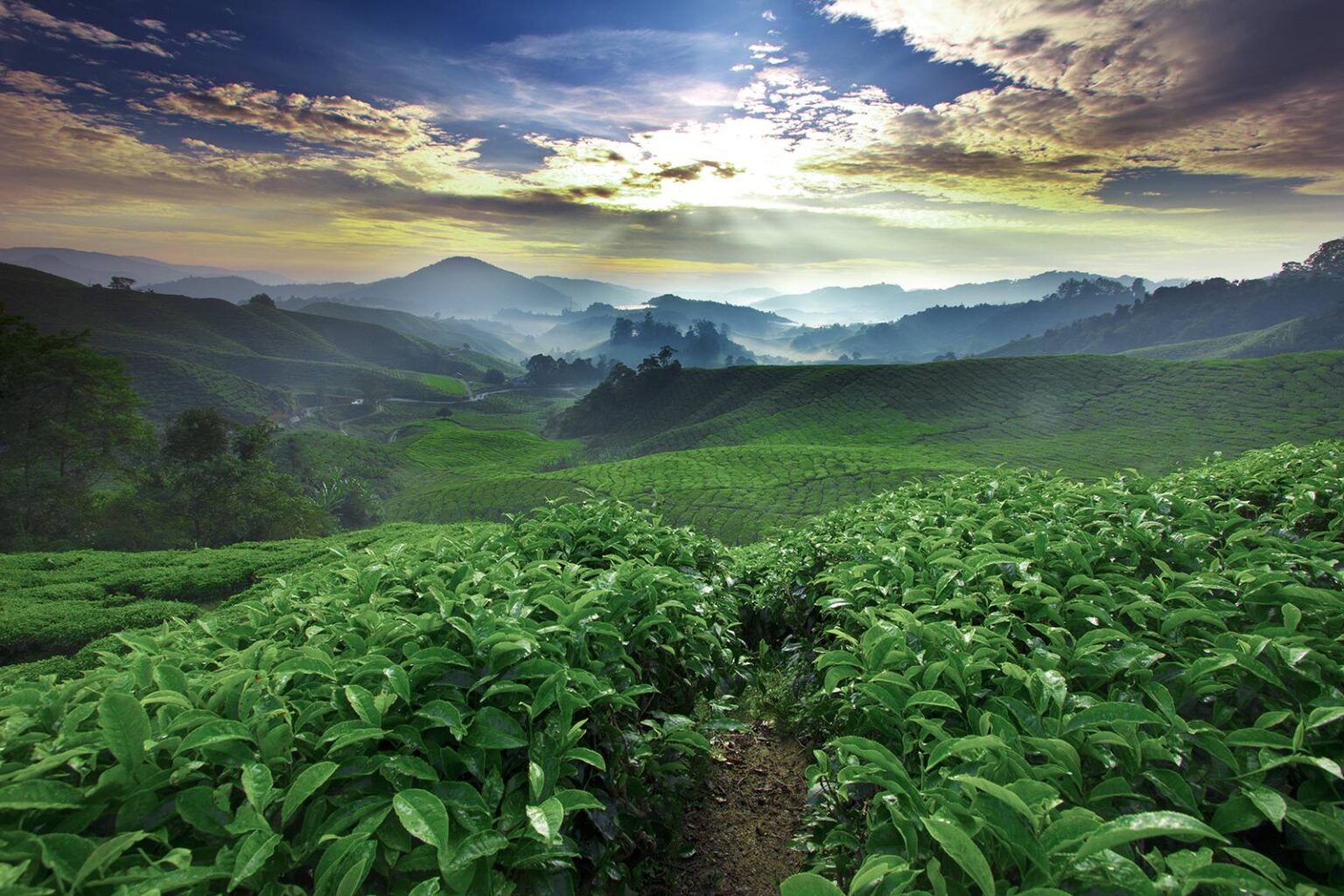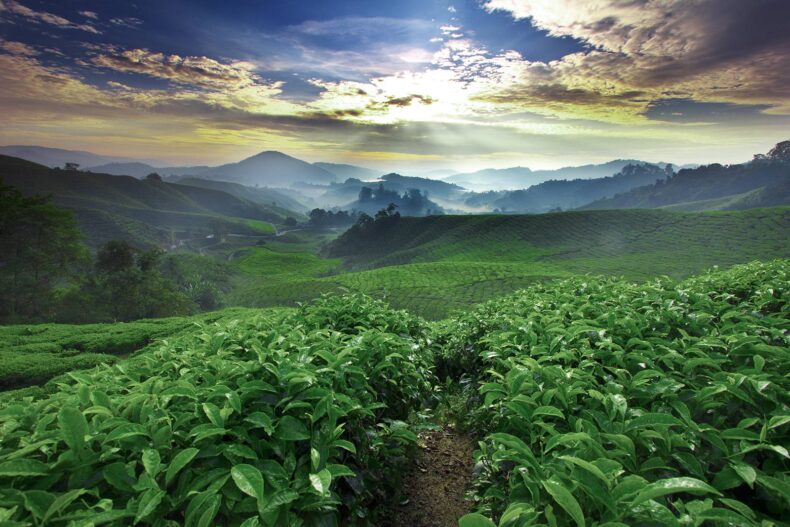
Kingdom of Kaffa
The Kingdom of Kaffa (c. 1390–1897) was an early modern state located in what is now Ethiopia, with its first capital at Bonga. The Gojeb River formed its northern border, beyond which lay the Gibe kingdoms; to the east the territory of the Konta and Kullo peoples lay between Kaffa and the Omo River; to the south numerous subgroups of the Gimira people, and to the west lay the Majangir people.[1] The native language, also known as Kaffa, is one of the Omotic group of languages.
Kaffa was divided into four sub-groups, who spoke a common language Kefficho, one of the Gonga/Kefoid group of Omotic languages; a number of groups of foreigners, Ethiopian Muslim traders and members of the Ethiopian Church, also lived in the kingdom. There were a number of groups of people, “but with the status of submerged status“, who also lived in the kingdom; these included the Manjo, or hunters; the Manne, or leatherworkers; and the Qemmo, or blacksmiths.[2] The Manjo even had their own king, appointed by the King of Kaffa, and were given the duties of guarding the royal compounds and the gates of the kingdom.[3] The kingdom was overrun and conquered in 1897, and was eventually annexed by Ethiopia.
The land where this former kingdom lay is in the southern parts of the Ethiopian Highlands with stretches of forest. The mountainous land is very fertile, capable of three harvests a year.
History
The Kingdom of Kaffa was founded c.1390 by Minjo, who according to oral tradition ousted the Mato dynasty of 32 kings. However, his informants told Amnon Orent, “no one remembers the name of a single one.”[4] The first capital Bonga was either founded or captured by Bon-noghe; it was later replaced by Anderaccha, but Bonga retained its importance.[citation needed]
During the 16th century, all of the territories north of the Gojeb River were lost to the Oromo migrations[citation needed]. Also in the later 16th century, the Emperor of Ethiopia Sarsa Dengel convinced the kingdom to officially accept Christianity as its state religion. As a result, the church of St. George was dedicated at Baha; the building preserved a tabot bearing the name of Emperor Sarsa Dengel. Over the following centuries the influence of the Ethiopian government grew weak, and Christianity more or less disappeared, although the church of St. George was used as a “male house of ritual of George” until late in the 19th century when Christian practices were reintroduced.[5]
Beginning with Gali Ginocho (1675–1710), the kings of Kaffa began to expand the borders of their kingdom, annexing the neighboring small Gimira states of She, Benesho and Majango. The neighboring state of the Welayta came under their control in the reign of Tato Shagi Sherocho (1775–1795), who extended the boundaries of his kingdom as far as the Omo to the southeast and almost to the confluence of the Omo and the Denchya to the south.[6] It was during the reign of King Hoti Gaocho (1798–1821), that the territory of the Kaffa kings reached its maximum. According to Orent, the traditions of the Kaffa people relate that he ruled far and wide, conquering wherever he went, even as far afield as Wolleta and Kambaata. “To this day,” concludes Orent, “some people still talk about the time that their ancestors defeated all their enemies and sat at the foot of a famous tree in Wolliso and decided not to go farther into Shoa province.”[7]
Gaki Sherocho in 1897
The last Kaffa king, Gaki Sherocho, resisted for months the combined armies of Wolde Giyorgis, Ras Damisse, and King Abba Jifar II of Jimma, until he was captured 11 September 1897, and was first sent to Ankober, then to Addis Ababa. Kaffa was then held as a fief by Wolde Giyogis until 1914.[3] During his visit to Kaffa in 1897, Alexander Bulatovich had the opportunity to study the culture of the inhabitants, describing them in his book With the Armies of Menelik II, emperor of Ethiopia, identifying a number of practices in common with the more familiar Amhara people.[8]
The inhabitants suffered greatly from slave-raiding during the de facto rule of Lij Iyasu, and the region almost became uninhabited. During the reorganization of the provinces in 1942, the former kingdom was enlarged by the addition of a number of other kingdoms from the Gibe region to become Kaffa Province.[citation needed]
Economy[edit]
A coffee cup from the era of the Kaffa Kingdom.
In Kaffa, Maria Theresa thalers (MT) and salt blocks called amoleh were used as currency (as in the rest of Ethiopia) as late as 1905, which circulated at a rate of four or five amolehs to 1 MT.[9]The economy was based on exports of gold, civet oil, and slaves. Crops grown included coffee and cotton. However, according to Richard Pankhurst, the amount of coffee exported was never large: he cites an estimate for its production in the 1880s at 50,000 to 60,000 kilograms a year.[10] Livestock was raised, and honeybees kept in barrels (called gendo) which were hung in trees.[11]
Pentru ca iubim cafeaua 🙂
Journey Kaffa Timisoara
Kaffa Province
Location of Kaffa within the Ethiopian Empire
Kaffa (Amharic: ከፋ) was a province on the southwestern side of Ethiopia; its capital city was Bonga. It was named after the former Kingdom of Kaffa or “Kefa”. The etymology of Kaffa is thought to be from the Arabic qahwah meaning “a drink from berries”.[1] The English word coffee is derived from the same root.[citation needed] Ancestors of today’s Kaffa people in a region of Southwest in Ethiopia were the first to cultivate coffee plant and recognise the energising effect of the coffee.[2]
Kaffa was bordered on the west by South Sudan, on the northwest by Illubabor, on the north by Walega, on the northeast by Shewa, on the east by Sidamo, and on the southeast by Gamu-Gofa.
In September 2021, the Kaffa people hold a referendum to create a new region, Ethiopia’s 11th, called the Southwest and made up of Kaffa and five other nearby administrative areas.
Demographics[edit]
Based on the 2017 Census conducted by the CSA, this Zone has a total population of 2,100,000, of whom 1,317,078 are men and 783,022women; 152,036 or 9.44% are urban inhabitants. The four largest ethnic groups reported in this Zone were the Kafficho (82.72%), the Bench (5.05%), the Amhara (3.67%), and the Oromo (3.5%); all other ethnic groups made up 5.09% of the population. Kafa is spoken as a first language by 82.49%, 4.18% speak Amharic, 5.13% Bench, and 3.43% speak Oromo; the remaining 4.77% spoke all other primary languages reported. 61.42% of the population said they practiced Ethiopian Orthodox Christianity, 24.84% were Protestants, 6.2% were Muslim, 5.37% practiced traditional beliefs, and 1.73% embraced Catholicism.[1]
Economy and environment[edit]
Southern Ethiopia, including Sidamo, Kaffa, Arsi and Harar is the original home of coffee [3] which grows wild here in the mountain rain forests in countless varieties. All plants of the species Coffea arabica around the world are descendants of plants from southern Ethiopia.[4]
Coffee has long been the main source of income, but due to the sharply declining world prices for coffee, the residents increasingly have to grow other crops. By turning rain forests into new agricultural land, the structure of the region is heavily damaged.
The rain forests that dominated the region of Kaffa earlier are reduced to only 3% of their original size, in the last 30 years 60% of the trees were lost.
For some years there is a large rain forest conservation project, which relies on the use of the last wild stocks of coffee growing in the rain forest. Currently, some 30 cooperatives are harvesting and marketing this specialty coffee and have helped over 40,000 people to get income.
In 2010, an area within the Kaffa province was recognised as a UNESCO Biosphere Reserve as part of the Man and the Biosphere Programme. Officially named the “Kafa Biosphere Reserve” it is one of the first two biosphere reserves in Ethiopia and aims to protect the natural environment and foster sustainable development in the region.[5] Lions were photographed in the reserve in 2012, the first documenting of that species in montane rainforest.[6]



